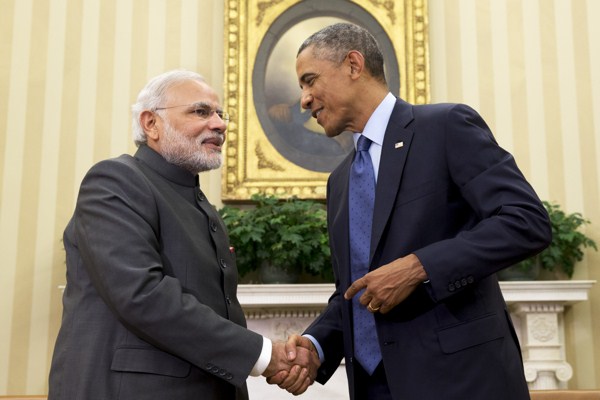Last week’s meeting between Indian Prime Minister Narendra Modi and U.S. President Barack Obama in Washington provides a convenient benchmark to assess where U.S. foreign policy is as we approach the final stretch of the current administration. A consistent theme of Obama’s presidency has been the inability to pivot from crisis management to longer-term planning. With regard to the latter goal, the value of stronger ties with a rising power like India is clear. Yet, it is telling that the meeting took place even as the Obama administration struggles to manage the Ebola pandemic in West Africa, the fight against the so-called Islamic State (IS) and the confrontation with Russia over Ukraine—to say nothing of negotiations with Iran over its nuclear program and ongoing tensions in the South China Sea between China and its East Asian maritime neighbors.
At least Modi and Obama finally met face to face—Modi had already been courted by Chinese President Xi Jinping and Russian President Vladimir Putin. And the optics of the visit seemed positive, with both leaders hitting all the right notes about partnership, cooperation and being “natural allies.” Yet the visit fell far short of achieving any dramatic reorientations in the Indo-American bilateral relationship. In fact, those expectations were deliberately tamped down, replaced by a series of more modest agreements. The summit—long on symbolism, short on substance—allows observers to draw some conclusions as to how U.S. foreign policy is likely to be conducted in the remaining time allotted to the Obama administration.
First, the summit sends a very clear signal that the White House is putting policy into holding patterns. As one assessment of the meeting’s outcome put it, both leaders did the “minimum needed to infuse new energy” into the relationship, but major breakthroughs and new initiatives were not forthcoming, nor should they be expected. The main results seem to be incremental progress on trade issues and on habituating the two sides’ military establishments to cooperation, leaving it up to the next president to decide where, when and under what circumstances to accelerate the relationship.

